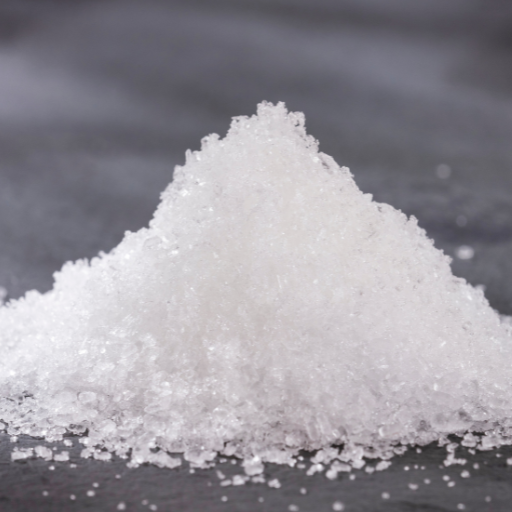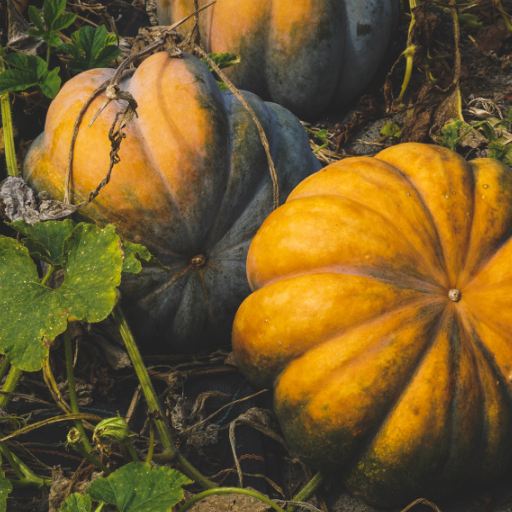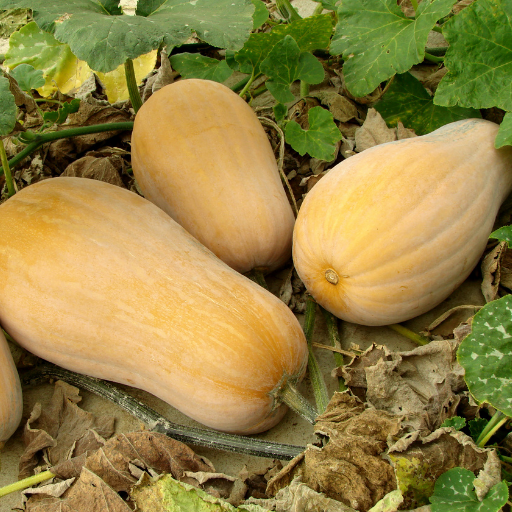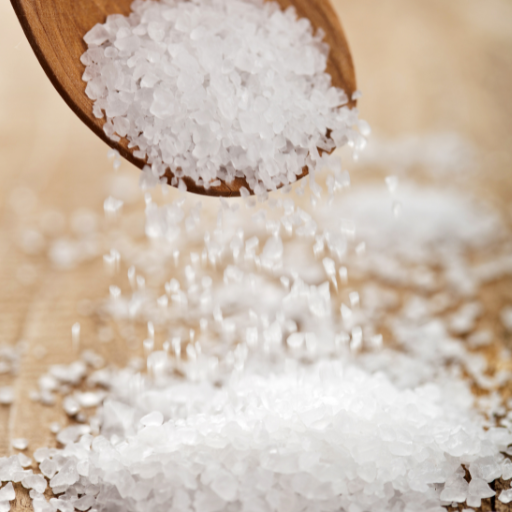Magnesium sulfate, commonly called Epsom salt, has become popular with gardeners for its claimed advantages on different plants, such as squash. The comprehension of the possible merits and uses of Epsom salt can enable better yields and improve squash health. This article investigates whether Epsom salts are really worth it for squash by evaluating their role in plant physiology, their effect on soil nutrients, and how to use them appropriately. In this article readers will get a holistic view on why Epsom salt is used scientifically and how it should be used in gardening.
How does Epsom Salt Benefit Squash Plants?

Epsom salts are particularly good for squash plants due to its high magnesium and sulphur contents that form an important part of the plant’s nutrient needs. Magnesium is a critical element in chlorophyll production hence allowing efficient light energy capture by plants and photosynthesis. This mineral is essential in squash cultivation as they require a lot of energy due to their fast growth and fruit development. On the other hand, sulfur is indispensable for synthesizing amino acids, proteins, enzymes involved in plant metabolism and immune responses. When used properly, Epsom salt can correct magnesium deficiencies in the soil which lead to healthier more productive squash plants with higher yields capable of resisting pests and diseases.
What Nutrients Does Epsom Salt Provide for Squash?
Two vital nutrients squash plants require for growth and health include magnesium and sulfur, which are contained in Epsom salt. For instance, magnesium constitutes about 9.8% of the weight of Epsom salts and it is an essential component found in chlorophyll molecules prerequisite for photosynthesis processes. Adequate presence of this mineral ensures proper production of chlorophyll thus enhancing energy synthesis boosting strong vegetative growth process among others. Sulfur makes up around 13% of this compound, which is important in making amino acids and proteins, among other numerous enzymes needed by living organisms, especially plants, to carry out multiple metabolic processes as well as its defense mechanisms like a biotic stress response system. In turn, such application not only eliminates any deficiency but also makes these elements available, leading to better growth patterns observed in such crops.
How Does Magnesium Benefit Squash Growth?
In many ways magnesium facilitates various biological processes within squash leaves’ tissues involving both physiological functions as well biochemical ones. First off, Mg forms a central atom within the structure of chlorophyll molecule, thereby aiding the absorption of sunlight necessary for photosynthesis before later transforming it into chemical energy or ATP (Adenosine Triphosphate). This is critically vital when it comes to strong plant growth as well as fruit development that require a lot of energy. For soils, the optimum concentration should be between 0.2% and 0.4% magnesium content. Notably, some soils have low levels of this organic mineral hence causing a situation referred to as chlorosis whereby leaves turn yellow in color with green veins.
Besides, magnesium activates numerous enzymes responsible for controlling metabolism in plants including the synthesis of ATP, which stores and transfers energy within cells. Furthermore, it helps maintain stable ribosome structures necessary for efficient protein synthesis. As such its sufficient availability boosts the general productivity of squash by increasing both the quality of yield and resistance to biotic stresses.
Why is Sulfur Important for Squash Plants?
Sulphur is involved in different facets linked with squash growth and development process. It can be found in amino acids like methionine and cysteine that make proteins. These are fundamental molecules for plant structure maintenance and physiological functions among others essential to all life forms especially crops. Besides, sulfur is needed in the production of vitamins and coenzymes which are engaged with various enzymatic reactions occurring within living organisms such as plants where it participates in several redox reactions crucial for their life processes.
For optimal growth of squash, soil should contain sulphur at levels ranging from about 20-30 ppm (parts per million). Sulphur deficiency may result into symptoms like young leaves turning yellow (similar but less pronounced than nitrogen deficiency) whilst there will be stunted growths. Availability of enough sulfur leads to robust root system formation, which improves nutrient absorption ability while also making them more tolerant to other adversities affecting vegetative parts like droughts or flooding situations commonly encountered during cultivation exercise throughout four seasons in regions located around tropics or Mediterranean climate zone worldwide respectively . Its involvement in making essential oil compounds influences interactions between plants and pests thus contributing towards increased agricultural efficiency associated with enhanced crop yield.
How to Use Epsom Salt in the Garden

Epsom salt, scientifically called magnesium sulfate, may be a helpful addition to your garden in the right amounts. It is also good to dissolve it with water for easy absorption into plants when used in the garden. A typical solution for most plants involves combining 1 tablespoon of Epsom salt with 1 gallon of water. This solution may be applied directly on the ground or be sprayed on leaves to provide quick uptake. For soil application, let your plants have enough moisture every two to four weeks through Epsom-salt watering.Also, one can strew directly over the earth at the base of each plant several tablespoons per foot of height (one).When using it remember not applying too much since excessive magnesium accumulates in soil and affects its nutrient balance thereby leading to poor health of crops.
How Much Epsom Salt Should You Use Per Gallon of Water?
In determining how much Epsom salt should be used per gallon of water, you need to consider a few things to get both maximum effectiveness and optimum plant welfare. Reliable sources have provided data which suggests:
- General Plant Care: Most garden plants require about 14.3 grams (approximately one tablespoon) of Espoma salts dissolved in 3.785 liters (one gallon) of water for complete nutrient up-take from the roots without causing imbalances.
- Tomatoes and Peppers: These specific plants require higher sulfur levels and magnesium content as well. Also, apply between 14.2-28.6 grams/1-2 tbsp per gallon.Early season applications up until fruiting are recommended for maintaining proper growth conditions.
- Roses: Every month from April through October a foliar spray with liquid fertilizer consisting of 14g epsomite per litre excites blossoming and sustains root development.
Additionally, check individual plant reactions since there might be variation among them (three). Overuse affects the nutrient composition in soil, thereby negatively affecting the plants. Soil testing should be done; it is important for assessing plant growth and magnesium and sulfur supplementation as required by specific garden conditions.
What is the Recommended Application Frequency?
The frequency of application will depend on the type of plant species and their peculiar requirements:
General Plant Care: Epsom salt may be used once a month for most garden plants to provide a constant source of magnesium and sulfur without overdoing it.
Tomatoes and Peppers: Applying Epsom salt every other week throughout the growing season helps these crops thrive quickly producing healthy leaves, stems, roots of tomatoes, peppers, etc.
Roses: For continuous magnesium and sulfur intake leading to improved plant vigor, use Epsom salts as spray or drench after each 4-6 weeks.
Plant response and soil conditions require adjusting the frequency of application and dosage, as the excessive use of Epsom salts can disturb the equilibrium of nutrients in soil. It is, therefore, recommended that one does regular soil test and plant health monitoring to adapt it to particular garden needs. Here are some recommended concentrations when using Epsom salt:
- General Plants: 1 tablespoon per gallon of water.
- Tomatoes and Peppers: 1-2 tablespoons per gallon of water.
- Roses: 1 tablespoon per gallon of water.
Are There Any Risks of Using Too Much Epsom Salt?
Plants and soil health get exposed to various risks due to too much application of Epsom salt. These are their main issues and technical parameters:
- Nutrient Imbalance: The overuse of Epsom salts tends to unbalance the magnesium content in the soil, hindering calcium and potassium absorption, which are vital for plant growth.
- Root Absorption Issues: High levels of magnesium sulfate can disrupt soil osmotic pressure thus making it hard for plants roots to take up water and other nutrients efficiently. This kind of osmotic stress may cause nutrient deficiency as well as weakened plants.
- Soil Structure Degradation: Continuous use of Epsom salts without proper soil testing could degrade their structure over time. Excess magnesium can lead to the dispersion of soil particles, reducing air circulation and drainage in the soil, which is detrimental to roots.
The following are some guidelines that should be considered in order to reduce these risks:
- Regular Soil Testing: Periodically, have a soil test done to ascertain the level of magnesium and general nutrient balance. This enables informed adjustments regarding Epsom salt applications, among other fertilizer practices.
- Moderation and Monitoring: When applying Epsom salts, ensure you use them in moderation while still sticking within suggested concentration levels and frequencies. Observe how your plants respond visually through indicators that show poor plant healthiness, then consider making necessary changes accordingly.
- Supplement with Comprehensive Fertilization: A properly formulated fertilization program encompassing a wide range of essential nutrients must be used concurrently with Epsom salt supplementation. This will ensure a sufficient supply of all essential minerals, such as calcium, potassium, etc.
By following these principles, gardeners can maximize their benefits from using epsom salts while minimizing any potential negative effects on plants or soils.
Can Epsom Salt Prevent Blossom End Rot in Squash?

Blossom end rot in squash is primarily caused by lack of calcium in the fruit. In addition, though magnesium sulfate (Epsom salt), can be good to supply plant with magnesium, it does not solve the underlying problem of calcium deficiency that leads to blossom end rot. In fact too much magnesium might interfere with calcium absorption thus making things worse. Effective prevention of blossom end rot includes ensuring consistent soil moisture and providing sufficient calcium through proper fertilization practices such as using calcium nitrate or calcium chloride or soil amendments like lime.
What Causes Blossom End Rot in Squash Plants?
Calcium imbalance within the plant tissues is at the root of blossom end rot on squash plants. This physiological disorder often occurs when plants are subjected to water stress particularly during important fruit development periods. Insufficient water supply may impede uptake and movement of calcium within a plant resulting into characteristic symptoms at the blossom end of fruits.
Several environmental and cultural factors can affect incidence of blossom end rot:
- Soil pH: Ensure that soil pH ranges from 6 to 6.5 for maximum availability of calcium.
- Water Management: Maintain uniform soil moisture content while avoiding situations of drought stress. Regularly irrigate crops and conserve water using mulch.
- Fertilization Practices: Avoid excessive nitrogen application since more nitrogen expands leaves at the expense of fruits, interfering with the absorption rate and assimilation capacity for calcium.
- Calcium Source: To adequately supplement this nutrient, apply gypsum (calcium sulfate) or lime (calcium carbonate) as soil amendments. Quick fixes, such as applying foliar sprays containing either sodium nitrate or potassium chloride, should also be considered.
With proper management techniques such as maintaining ideal moisture levels, overseeing pH levels, and administering well-balanced fertilizer programs, gardeners can effectively control and prevent this condition from occurring again in their squash plants.
How Can Epsom Salt Help Prevent Blossom End Rot?
Epsom salt, also known by its chemical name magnesium sulfate, is often recommended as a remedy for preventing blossom end rot in squash plants. Nevertheless, this method of solving the issue of calcium deficiency has its limitations since blossom end rot results from a dearth of calcium rather than magnesium. Even though Epsom salts are rich in sulfur and magnesium, their effectiveness as remedies for blossom-end rot due to insufficient calcium uptake is limited.
Although addition of Epsom salt in soil or as a foliar spray can provide other benefits, these do not generally relate to prevention of blossom end rot:
- Magnesium Supplementation: It can be used to treat magnesium deficiency in soil. The normal application rate is 1-2 tablespoons per gallon during foliar spraying or 1 cup per 100 square feet applied on the soil.
- Chlorophyll Production: This element is essential for chlorophyll, the photosynthetic pigment found in plants. If plants have enough magnesium, their photosynthesis capacity will be high, enhancing overall plant health.
- Enhanced Nutrient Uptake: Sulfate derived from Epsom salt could improve nutrient utilization efficiency and balance plant growth performance.
For effective management of blossom end rot focus on solutions related to calcium:
- Calcium Nitrate: When fruits develop, you should apply it at a rate of 1-2 teaspoons per gallon during foliar spraying or soil drenching operations.
- Gypsum: To increase soil Ca levels without much pH disturbance, apply approximately 1-2 pounds per 100 square feet of garden area.
Given the chief cause of blossom end rot is because of a lack of calcium, Epsom salt should be thought of as a way to correct magnesium deficiency, but not as a direct remedy for blossom end rot.
What Other Practices Can Help Prevent Blossom End Rot?
Blossom end rot can be prevented by ensuring consistent soil moisture. To achieve this, keep watering on schedule and add mulch to retain soil moisture and reduce swings in soil moisture. Proper soil pH is also necessary for nutrient uptake, which should be between 6.2-6.8 if possible. Too much nitrogen fertilization also increases calcium deficit leading to excessive vegetative growth at the cost of fruit development. Lastly, one must ensure that the soil is well-drained and not too compacted since this will obstruct movement of calcium in the plant. In addition with regular testing of the soil and adjusting it accordingly can help create optimum growing environment for plants minimizing occurrence of blossom end rot disease.
How to Apply Epsom Salt to Squash Plants

To apply Epsom salt on squash plants, dissolve one tablespoon of Epsom salt in a gallon of water. This can be used as either foliar spray or soil drench. For foliar application, apply the mixture directly to the leaves every two-four weeks during growing season as this allows magnesium and sulfur to get absorbed through the foliage into the plant quickly. Water each plant base with the solution ensuring that roots are sufficiently soaked into it. This helps prevent magnesium deficiency which results in yellowing leaves and poor fruit development. The productivity and overall health of the plant can be enhanced through regular applications throughout the growth period.
What is the Best Method to Apply Epsom Salt?
When deciding on how best to apply Epsom salts to squash plants, there are several methods and unique requirements for each species.
- Foliar Spray:
- Dosage: Blend 1 tablespoonful of Epsom salt in 1 gallon of water and directly spray it onto the leaves once in every two or four weeks respectively.
- Benefits: With this method, deficiencies take less time since sulfur and magnesium are quickly absorbed through leaves.
- Soil Drench:
- Dosage: Dissolve 1 tablespoonful of Epsom salt in 1 gallon of water; water every plant’s base with this solution at least once per month when growing your vegetables.
- Benefits: In addition, healthy growth and fruit development depend on adequate nutrient absorption by roots from the soil. Proper root saturation is vital for overall plant health.
- Pre-Planting Soil Amendment:
- Dosage: Prior to planting, work one cupful (8 ounces) of Epson salts into each 100 square feet using a hand trowel or fork.
- Benefits: It should also be noted that starting from enriched soil containing MgSO4 (Epson salts) would create an ideal environment for optimum growth before any lack is seen, ensuring a robust grower avoiding magnesium shortage symptoms.
Considering these technical parameters, both foliar application and soil drenching are effective for addressing immediate nutrient deficiencies, while pre-planting soil amendment is beneficial as a preventive measure. The choice of method depends on the specific symptoms and growth stage of the plants.
Should Epsom Salt Be Applied as a Soil Amendment or Foliar Spray?
The decision to use Epsom salts as a soil amendment or foliar spray will depend on several factors such as the type of plant, observed deficiencies and the period of growth. One should add Epsom salt to their garden if one desires to maintain long-term soil health that enhances root development and supports overall plant vitality by providing magnesium and sulfur. This method is particularly effective during the initial planting stages or when preparing vegetable gardens for the season.
On the contrary, acute leaf deficiency symptoms such as chlorosis in between veins can be addressed with foliar sprays. A fast absorption rate allows it to be a quick remedy hence; ideal for foliar applications. In cases where plants are already experiencing nutrient stress, a foliar spray can provide instant relief while applying manure can give longer-lasting support.
In conclusion, combining these two approaches at different times – adding manure in first planting time and using foliar sprays whenever required – could help maximize plant fitness.
Tips for Effective Application of Epsom Salt
- Determine the Proper Dosage: For soil amendment, incorporate 1-2 tablespoons of Epsom salt per plant or per foot of soil. For foliar sprays, dissolve 1 tablespoon of Epsom salt in a gallon of water to ensure precise nutrient delivery.
- Timing of Application: Apply Epsom salt at the right growth stage. When magnesium deficiency symptoms appear, use soil amendment during pre-planting to enhance root establishment and foliar sprays.
- Ensure Even Distribution: When applying Epsom salt to soil, distribute it evenly to avoid over-concentration, which can harm the plants. For foliar sprays, thoroughly cover the plant’s foliage but avoid runoff.
- Frequency of Application: Limit foliar spraying to once a month to prevent nutrient buildup and potential leaf burn. Soil amendments can be done 2-3 times during the growing season depending on the plant’s needs.
- Compatibility with Other Nutrients: To prevent nutrient antagonism, avoid mixing Epsom salts with calcium fertilizers. Instead, apply them separately to ensure optimal nutrient availability.
- Watering Considerations: After applying Epsom salt to soil, water the plants adequately to help the salts dissolve and be absorbed by the roots. For foliar application, ensure the sprays are done on cool, dry days to maximize absorption and minimize evaporation.
Are There Garden Plants Other Than Squash That Like Epsom Salt?

Yes, several other types of plants in the garden require the use of Epsom salt apart from squash. Examples include tomato plants, peppers and roses. Blossoming end rottenness prevention and general growth improvement are ways that tomatoes and peppers benefit from Epsom salts. Bushy growth is promoted by the use of Epsom salt on roses thus increasing their flower output. Additionally, cucumbers, houseplants and even lawn grass among others can benefit from Epsom salt which has magnesium and sulfur that enhances nutrient absorption, chlorophyll production as well as overall plant vigor.
What Vegetables Benefit from Epsom Salt?
Some vegetables such as tomatoes, beans or peppers have lots to gain when exposed to Epsom salt applications. Through this, they get enough nutrients, especially magnesium, which improves fruit setting, hence reducing issues like blossom end rot in these crops (peppers). Similarly, beans appreciate the value of this component since they are vegetatively nourished through proper utilization of nitrogen due to the right amounts of magnesium, which are compatible with its needs. Application in moderation will enable all these foods’ potential healthiest status by availing nutrients while a higher chlorophyll content is fostered.
Does Epsom Salt Work for Flowering Plants?
Epsom salt does indeed work for flowering plants. The presence of magnesium in Epsom salt helps to make chlorophyll necessary for photosynthesis. Consequently, rose bushes can produce very vibrant blooms with lush foliage because they contain more chlorophyll, particularly when fed with epsomite minerals like azaleas and rhododendrons do. Besides; sulphur found in it supports activities of enzymes while proteins synthesized contribute to better condition plus vitality with respect to these organisms generally speaking. Many ornamental species can be improved through regular application either by soil amendments or foliar sprays.
Can I Use Epsom Salt for Zucchini and Tomato Plants?
Certainly, both zucchini and tomato plants can be subjected to Epsom salt. Zucchini, for instance, exhibits yellowing of leaves and reduced yields when short of magnesium. Epsom salts help in correcting this by giving crucial magnesium that improves chlorophyll production and hence the nutrient uptake. Also, tomatoes are prone to blossom end rot which is often caused by calcium deficiency but worsened by lack of magnesium as well hence their increased use of Epsom salt. In both the above cases, regular application through soil drenching or foliar spraying results in strong, healthy growth and plenty of full fruit yield.
Frequently Asked Questions (FAQs)
Q: Is Epsom salt good for squash plants?
A: Epsom salt can be beneficial for squash plants if used correctly. It helps provide magnesium, which is essential for the plant’s growth. However, it should be used in moderation and as part of a balanced fertilization plan.
Q: How do I add Epsom salts to my squash plants?
A: You can add Epsom salts to your squash plants by dissolving 1 tablespoon of Epsom salts in a gallon of water and applying this solution to the base of the plants. This method ensures that the magnesium is water soluble and easily absorbed by the plant roots.
Q: Can using Epsom salts treat blossom end rot in tomatoes?
A: While some people believe that using Epsom salts can help treat blossom end rot in tomatoes, this condition is typically caused by a calcium deficiency. Epsom salts do not contain calcium, so it is not effective for this issue.
Q: Is blossom end rot caused by magnesium deficiency?
A: No, blossom end rot is caused by a calcium deficiency, not magnesium. While Epsom salts can help provide magnesium, they won’t remedy calcium-related issues like blossom end rot.
Q: Are there any risks of using Epsom salt for garden use?
A: Using too much Epsom salt in your garden can lead to soil imbalance and can harm plants. It’s important to apply it in the right amounts and to be aware that excessive magnesium could interfere with soil nutrient levels.
Q: Can Epsom salts help plants grow better?
A: Epsom salts may help plants that are deficient in magnesium by providing this vital nutrient. However, for best results, it should be used in conjunction with other soil amendments and a balanced fertilization program.
Q: Is Epsom salt for garden use a common garden myth?
A: The effectiveness of Epsom salt in garden use is somewhat controversial. While some gardeners swear by it, others believe it to be unnecessary if soil magnesium levels are adequate. Proper soil testing and nutrient management are the best practices.
Q: How often should I add Epsom salts to my squash plants?
A: It’s generally recommended to apply Epsom salts once a month during the growing season. Overuse can lead to an excess of magnesium in the soil, so moderation is key.
Q: Can Epsom salts on plants help with other deficiencies?
A: Epsom salts specifically address magnesium deficiencies. They won’t help with deficiencies of other nutrients like calcium, nitrogen, phosphorus, or potassium. Comprehensive soil testing can help determine if other amendments are needed.






